1. Introduction
With the rapid development of electronic information technology, the society is fully stepping into the information age. Digital signal processing technology has received great attention and has been fully developed in [1]. As one of the components of digital signal processing technology, the research and development of digital filter is also the focus of researchers. Compared with the traditional analog filter, the digital filter has the advantages of higher accuracy, better stability and no matching impedance. According to the network structure implementation, the digital filter can be divided into two categories: finite unit impact response (FIR) digital filter and infinite unit impact response (IIR) digital filter. FIR digital filter has the advantages of system stability and easy linear phase, so it is widely used in the fields of communication, audio processing, medical, radar and signal processing and industrial control and automation [2].
This paper focuses on the optimization of FIR digital filters in their development and their application in real life. First, this paper summarizes the problems existing and the need for improvement in the FIR digital filter section and discusses the efforts made by different research teams to solve these problems. Then, this paper introduces the practical application of some FIR digital filters, including their important role in the fields of medical treatment, audio processing, and radar systems. This paper aims to give some understanding of the field so that beginners have a certain amount of understanding of the field.
2. Optimization and development
2.1. Performance of noise reduction
In the last several years, passive filters have been used to reduce the signal noise and filters have been applied in the frequency range of the input signal. Digital signal processing filters’ main tasks are to minimize noise in order to increase signal effectiveness and remove sufficient information from the signal. Several filtering techniques are employed to decrease the impact of noise.
However, previous methods had the disadvantage of degrading the quality of speech and audio signals in applications due to background noise. Noise cancellation (NC) has received a lot of interest as a technique for removing noise from speech signals in order to enhance voice and audio quality. Sakkarai et al., a research team from the United States, offered a high-throughput, low-delay DA-FIR filter design that may be utilized for noise-denoising applications in SDR by combining it with an approximate kalaronic multiplier (AKM) and proposing a variable-delay carry-over skip adder (VLCSA) [3].
The approach makes use of AKM and VLCSA techniques to efficiently lower the computational complexity of the DA system, enhancing performance and finding a good balance between latency, computational complexity, and memory consumption, ultimately leading to an increase in the DA system’s overall efficiency.
2.2. Latency and size
Delay and occupied areas are important components of filter construction. The performance of the overall FPGA structure may be greatly increased by employing a special approach to generate high-speed and low-occupied area high-performance digital filter circuits. This is because conventional structures have shortcomings like high latency and large occupied areas.
Quantum dot cellular automata (QCA) technology is considered by academics to be one of the most effective methods for addressing these shortcomings and realizing this crucial structure. Thus, using quantum techniques, Ali’s team proposed a number of effective full adders, such as multipliers, sum gates, and accumulators, for use in digital filter applications. Additionally, they proposed a digital filter that uses routing delays to stabilize the pipeline registers’ output following the receipt of a clock signal [4].
2.3. Optimization of energy consumption
Low-power FIR filters are a hot research topic today. For example, the use of lower power consumption and smaller area filters in small portable devices can further reduce the size of portable devices and enhance the endurance of the devices. P. V. Praveen Sundar and his team proposed a distributed arithmetic (DA) design for hearing aids, which not only reduces the design area by 20%, but also reduces the power consumption by 40%, which is a very big enhancement for small portable devices, which is a very big improvement [5].
Shift registers, multipliers, and adders are frequently used in the design of adaptive FIR filters. The multiplier will require additional space and electricity. Many adaptive FIR filter topologies with fewer multipliers exist to boost speed and lower power consumption. Multiplier-less architecture replaces multiplier architecture in adaptive FIR filters to minimize area and power consumption. One of the best multiplier-less designs for achieving adaptive greater efficiency is distributed arithmetic (DA) design. The team chose a DA-based design with less memory in order to get around the problem of the current DA-based architecture, which uses more memory and hence requires more power and space. Compressor adder and multiplexer are used in the construction of the suggested Enhanced DA Architecture (EDA). The 2:1 multiplexer in the EDA design stands in for ROM, while the 4:2 compressor replaces the accumulator. The shift registers supply the EDA’s inputs, which are sent as one of the multiplexer’s inputs to the 2:1 while the multiplexer’s other inputs are marked as zero. The 4:1 multiplexer will have the option of using the filter coefficients; the 4:2 compressor receives the multiplexer’s output to produce the final output. Fig.1 shows the basic block diagram of the EDA [5].
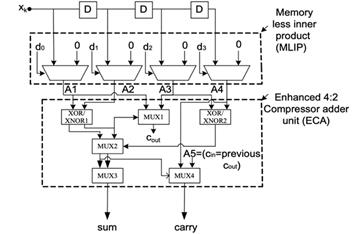
Figure 1. Basic block diagram of the EDA architecture [5].
In contrast, AMRITA RAI has proposed the use of a completely adiabatic approach to create a 4-bit low power FIR filter (PAL-FIR) that can reduce power consumption by up to 80% when compared to traditional CMOS FIR filters. The fundamental building components of the filter’s architecture are the multiplier adder and buffer. The lowest partial product is produced using the screen-bit coding multiplier technique, which lowers the multiplier’s area and latency. It thereby lowers power usage at the architectural level as well. The block diagram of the 4-tap adiabatic Direct-Form-II architecture of the FIR filter is shown in Fig. 2. A notable modification is the buffers in the upstream that equalize the delays of the adders and multipliers for each tap. Subsequently, the multiplier requires five pipeline stages, and the adder requires six. However, since one PAL stage is equivalent to half of a clock cycle, it is easy to investigate a total of five clock cycle delays by connecting PAL 12 buffers in series with each tap.
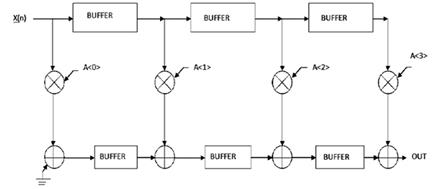
Figure 2. PAL-FIR filter with 4 taps using the basic block of the DSP [6].
The multiplier and adder, which are both separated into 2-stage equivalent delays, provide 4-stage pipeline logic when compared to the CMOS technique, as seen in Fig. 3. Four DFFs, or “flip-flops,” are used to adjust the delay units upstream throughout the tap. After that, the delay units reach the FIR filter, which has two multipliers and two adders for each realization step. The suggested FIR filter’s design calls for a delay of fifteen cycles and a sample flow of one per cycle.

Figure 3. Block diagram of 4-tap CMOS FIR filter [6].
According to the simulation results, the CMOS technology requires more components compared to the PAL adiabatic technology. The simulations show that the outputs of CMOS-FIR and PAL-FIR are roughly similar, but the PAL-FIR filter requires only half the complexity and components of the CMOS-FIR filter. In addition, PAL-FIR filters consume less power compared to CMOS-FIR filters [6].
2.4. Multi-pass filter
Multi-pass filters usually have multiple passbands. This means that they can allow signals in multiple frequency ranges to pass through. Specifically, multi-pass filters can have low pass, high pass, band pass or band reject characteristics simultaneously to meet the needs of different applications. Multi-pass filters are frequency selection devices that allow specific frequency components of a signal to pass through and greatly attenuate other frequency components.
Zhao’s team developed a multi-channel optimal finite impulse response (OFIR) filtering method. Recursion is used to construct batch and fast iterative forms of the forward and reverse OFIR filters. Using simulation and experimental data, they designed dual-pass OFIR (DOFIR) filters supported by unbiased FIR (UFIR) filters and three-pass OFIR (TOFIR) filters, which radically improve performance close to the initial value and are more resistant to temporary model mismatch much more resistant. Not only that, the computational complexity of this design is acceptable. The team is now considering optimizing the multichannel OFIR filter structure to reduce computational time while maintaining the achieved robust performance [7].
3. Application examples
FIR digital filters play an important role in various industries and have become one of the most important tools in the field of digital signal processing. Whether it is communications, audio processing, medical, radar and signal processing, or industrial control and automation, FIR digital filters have an important role. The next part of this article will introduce the applications in related fields.
3.1. Medical field
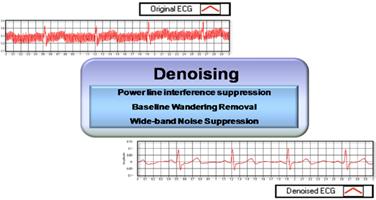
Figure 4. Comparison of ECG before and after denoising [8].
In the medical field, the processing of electrocardiogram (ECG) signals is often interfered with by the 60 Hz frequency from the power system. This interference may degrade the quality of the ECG signal, making it difficult for doctors to accurately diagnose the patient’s heart condition. By designing FIR digital filter coefficients, this interference from the power system can be reduced or removed. As in Fig. 4, the denoising function of the filter for ECG is shown in the fig. In addition, FIR digital filters can also help to remove other noises in ECG signals, such as interference from body movements, breathing and EMG. And in biomedical imaging, the enhancement of white pixel values enhances the image, which helps to analyze it and improve the accuracy of medical diagnosis [8].
3.2. Audio processing
Human hearing ranges from 20 Hz to 20 kHz, so when it comes to audio processing, selecting FIR filters that can offer enough frequency response coverage, while also processing various audio data frequencies in real-time for frequency shaping, noise reduction, and signal enhancement, can be important in enhancing the quality of the audio signal during voice calls. These days, band pass, high pass, and low pass filters are the most used ones [9]. The amplitude response and phase shift of a band-pass filter, low-pass filter, high-pass filter, and single-channel filter are displayed in Figs 5, fig 6, andfig 7. Correspondingly. The low-pass filter may effectively pass low-pass frequency signals while blocking high-frequency signals, as seen in Fig 5. The high pass filter is seen to pass high-frequency signals while blocking low frequency signals in Fig 6. Fig 7 illustrates how a bandpass filter passes over a restricted frequency range, obstructing both high- and low-frequency sounds [9].
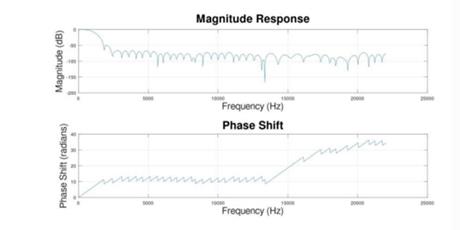
Figure 5. Phase shift and amplitude response of a single-channel low-pass filter [9].
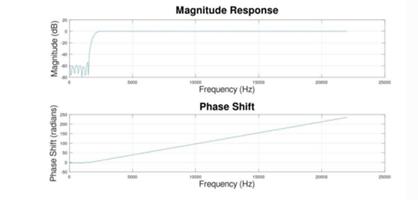
Figure 6. Phase shift and amplitude response of a single-channel high-pass filter [9].
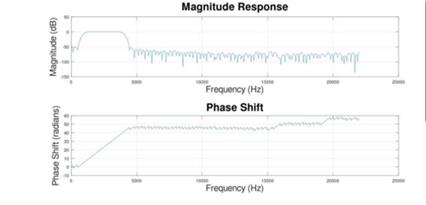
Figure 7. A single-channel bandpass filter’s amplitude response and phase shift [9].
3.3. Radar systems
In radar systems, the radar-received signals are accurately filtered and processed to make them more effective in identifying targets and reducing interference, thus improving the performance of the radar system. In practice, the traditional FIR digital filter can be improved by the distributed algorithm (DA) structure to effectively handle higher order filters and signals with larger word lengths. The efficiency and performance of the filter are improved to make it more advantageous. As seen in Fig. 8, the lower picture displays the outcome of filtering, and the upper fig displays the original signal with burrs that gravely impair additional analysis [10].
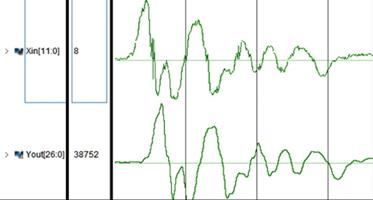
Figure 8. The improved DA-based FIR filter is used to compare filtering results [10].
4. Conclusion
FIR and infinite impulse response (IIR) are the two types of filters commonly used in digital signal processing. Compared with the IIR filter, the FIR filter is always stable, with no abnormal frequency response problem; and has linear phase characteristics, no signal delay and phase distortion; and a simple design, so it is easier to design creative characteristics, not only low pass, high pass, band pass, band resistance, this paper also introduced the relatively new multi-pass FIR filter design. Based on these characteristics of FIR filters, there are many areas that use FIR filters in their systems. FIR filters are essential in areas such as communications, audio processing, medical care, radar, signal processing, and industrial control automation.
With the progress of material technology and other technologies, many equipment will become small, low power consumption, that is, to achieve the same or better function or performance at the same time, so that the equipment is smaller, with lower power consumption, and less heat. Therefore, in the process of optimization design, each component will be optimized for design, including the FIR filter. So now there are a lot of research teams in low-power miniaturization FIR filter research and design results. Their design creativity is a breakthrough, they made in design logic including reduced delay and heat design. Compared with ordinary FIR filters, the new design scheme in heat, power consumption and scale has made huge progress.
With the development of communication technology, there are many new multipass filter designs. The design method of the general basic multi-pass filter is realized through cascading multiple filters, while the new design scheme, compared with the ordinary multi-pass filter, can achieve a significant improvement in performance and have a significant improvement in anti-interference performance. FIR filter has an irreplaceable role in all fields of the world, and the latest design of FIR filter not only greatly improves the performance, but also achieves miniaturization and low power consumption, which will play a more crucial role in future applications.
Authors Contribution
All the authors contributed equally and their names were listed in alphabetical order.
References
[1]. Sun T 2017 Parallel FIR filter coefficient design and structure optimization. Zhejiang University
[2]. Aditya M Santosh P 2021 Power and delay efficient fir filter design using ESSA and VL-CSKA based booth multiplier. Microprocessors and Microsystems vol 86
[3]. Sakkarai S Krishnan V 2024 Distributed arithmetic-FIR filter design using Approximate Karatsuba Multiplier and VLCSA Expert Systems with Applications vol 249
[4]. Taghavirashidizadeh A Ahmadpou, S Ahmed S Jafari N N Kassa S R Yalcin S 2024 A new design of a digital filter for an efficient field programmable gate array using quantum dot technology Materials Science and Engineering B, p 300
[5]. Praveen Sundar P V Ranjith D Karthikeyan T 2020 Low power area efficient adaptive FIR filter for hearing aids using distributed arithmetic architecture. International Journal of Speech Technology vo l23 p 287–296.
[6]. Rai A 2023 An optimization of low power 4-bit PAL FIR filter using adiabatic techniques Sādhanā vol 48 p 84
[7]. Zhao S Shmaliy Y S Andrade-Lucio J A Liu F 2021 Multipass optimal FIR filtering for processes with unknown initial states and temporary mismatches IEEE Transactions on Industrial Informatics vol 17 no 8 p 5360-5368
[8]. Al-Khammasi S Aboalayon K A I 2016 Hardware-based FIR filter implementations for ECG signal denoising A monitoring framework from industrial electronics perspective In 2016 Annual Connecticut Conference on Industrial Electronics Technology Automation p 1-6
[9]. Syed F Ali W Kumar A Bakhsh F I 2023 Implementation of FIR digital filters on FPGA board for real-time audio processing. In 2023 International Conference on Technology and Policy in Energy and Electric Power p 233-237
[10]. Li J Bai X Han S Yu Y 2020 The design of FIR filter based on improved DA and implementation to high-speed ground penetrating radar system. In 2020 International Wireless Communications and Mobile Computing p 1140-1144
Cite this article
Hao,Z.;Liu,C.;Ouyang,S. (2024). Study on the optimization process and application of FIR digital filter. Applied and Computational Engineering,72,107-113.
Data availability
The datasets used and/or analyzed during the current study will be available from the authors upon reasonable request.
Disclaimer/Publisher's Note
The statements, opinions and data contained in all publications are solely those of the individual author(s) and contributor(s) and not of EWA Publishing and/or the editor(s). EWA Publishing and/or the editor(s) disclaim responsibility for any injury to people or property resulting from any ideas, methods, instructions or products referred to in the content.
About volume
Volume title: Proceedings of the 2nd International Conference on Functional Materials and Civil Engineering
© 2024 by the author(s). Licensee EWA Publishing, Oxford, UK. This article is an open access article distributed under the terms and
conditions of the Creative Commons Attribution (CC BY) license. Authors who
publish this series agree to the following terms:
1. Authors retain copyright and grant the series right of first publication with the work simultaneously licensed under a Creative Commons
Attribution License that allows others to share the work with an acknowledgment of the work's authorship and initial publication in this
series.
2. Authors are able to enter into separate, additional contractual arrangements for the non-exclusive distribution of the series's published
version of the work (e.g., post it to an institutional repository or publish it in a book), with an acknowledgment of its initial
publication in this series.
3. Authors are permitted and encouraged to post their work online (e.g., in institutional repositories or on their website) prior to and
during the submission process, as it can lead to productive exchanges, as well as earlier and greater citation of published work (See
Open access policy for details).
References
[1]. Sun T 2017 Parallel FIR filter coefficient design and structure optimization. Zhejiang University
[2]. Aditya M Santosh P 2021 Power and delay efficient fir filter design using ESSA and VL-CSKA based booth multiplier. Microprocessors and Microsystems vol 86
[3]. Sakkarai S Krishnan V 2024 Distributed arithmetic-FIR filter design using Approximate Karatsuba Multiplier and VLCSA Expert Systems with Applications vol 249
[4]. Taghavirashidizadeh A Ahmadpou, S Ahmed S Jafari N N Kassa S R Yalcin S 2024 A new design of a digital filter for an efficient field programmable gate array using quantum dot technology Materials Science and Engineering B, p 300
[5]. Praveen Sundar P V Ranjith D Karthikeyan T 2020 Low power area efficient adaptive FIR filter for hearing aids using distributed arithmetic architecture. International Journal of Speech Technology vo l23 p 287–296.
[6]. Rai A 2023 An optimization of low power 4-bit PAL FIR filter using adiabatic techniques Sādhanā vol 48 p 84
[7]. Zhao S Shmaliy Y S Andrade-Lucio J A Liu F 2021 Multipass optimal FIR filtering for processes with unknown initial states and temporary mismatches IEEE Transactions on Industrial Informatics vol 17 no 8 p 5360-5368
[8]. Al-Khammasi S Aboalayon K A I 2016 Hardware-based FIR filter implementations for ECG signal denoising A monitoring framework from industrial electronics perspective In 2016 Annual Connecticut Conference on Industrial Electronics Technology Automation p 1-6
[9]. Syed F Ali W Kumar A Bakhsh F I 2023 Implementation of FIR digital filters on FPGA board for real-time audio processing. In 2023 International Conference on Technology and Policy in Energy and Electric Power p 233-237
[10]. Li J Bai X Han S Yu Y 2020 The design of FIR filter based on improved DA and implementation to high-speed ground penetrating radar system. In 2020 International Wireless Communications and Mobile Computing p 1140-1144









